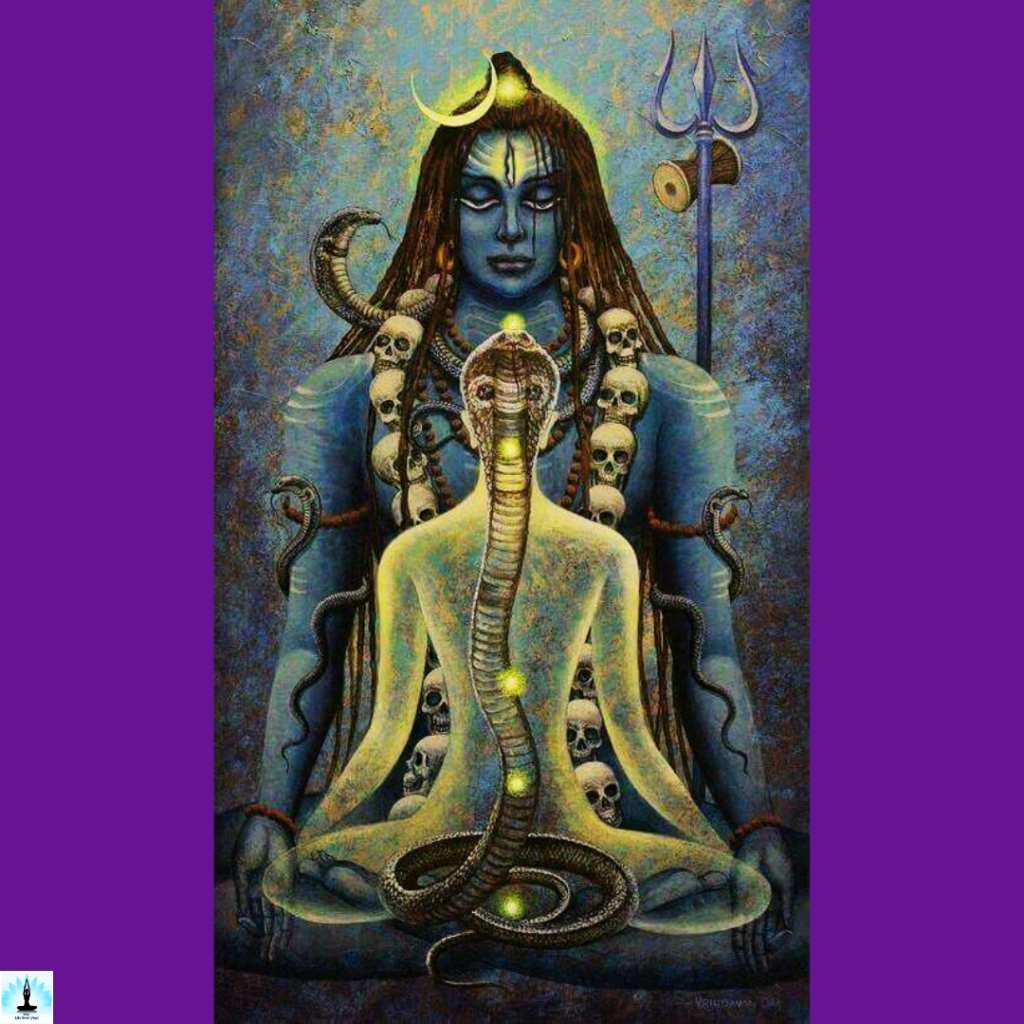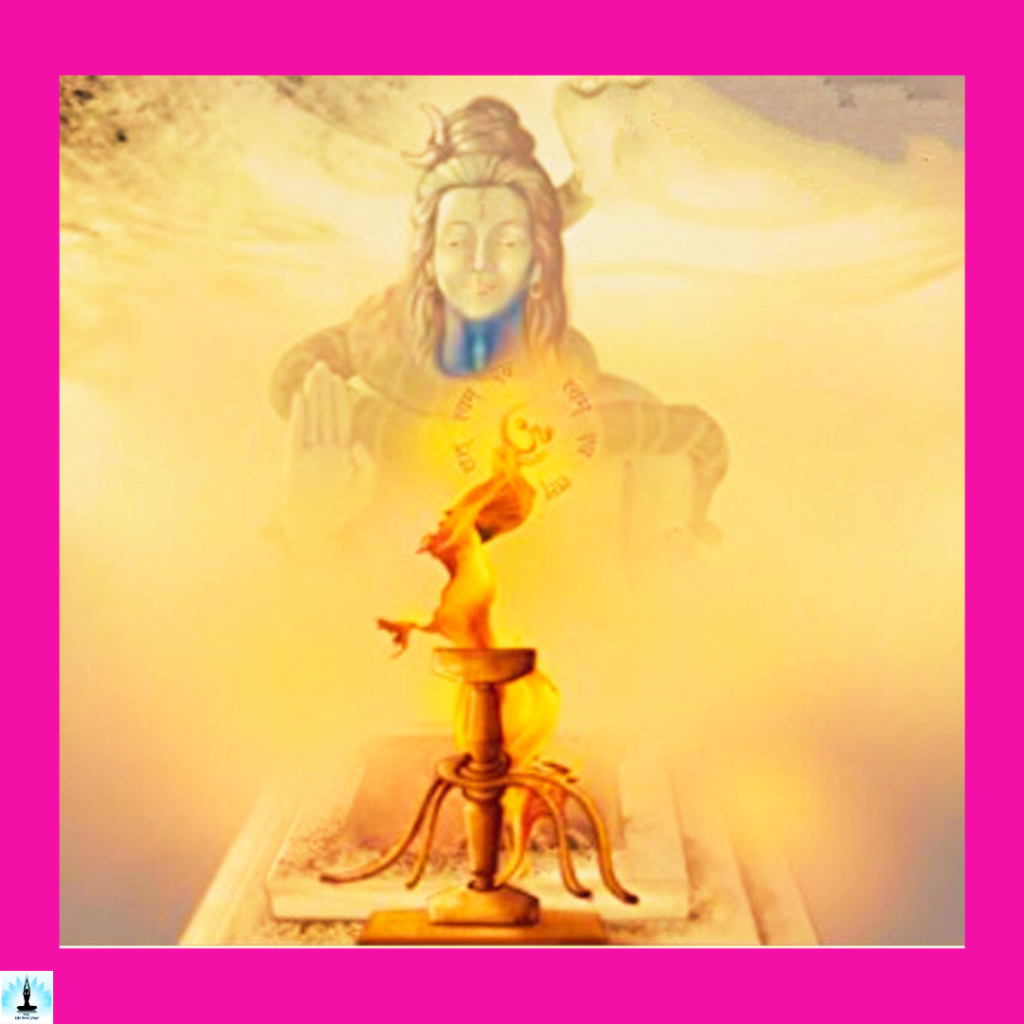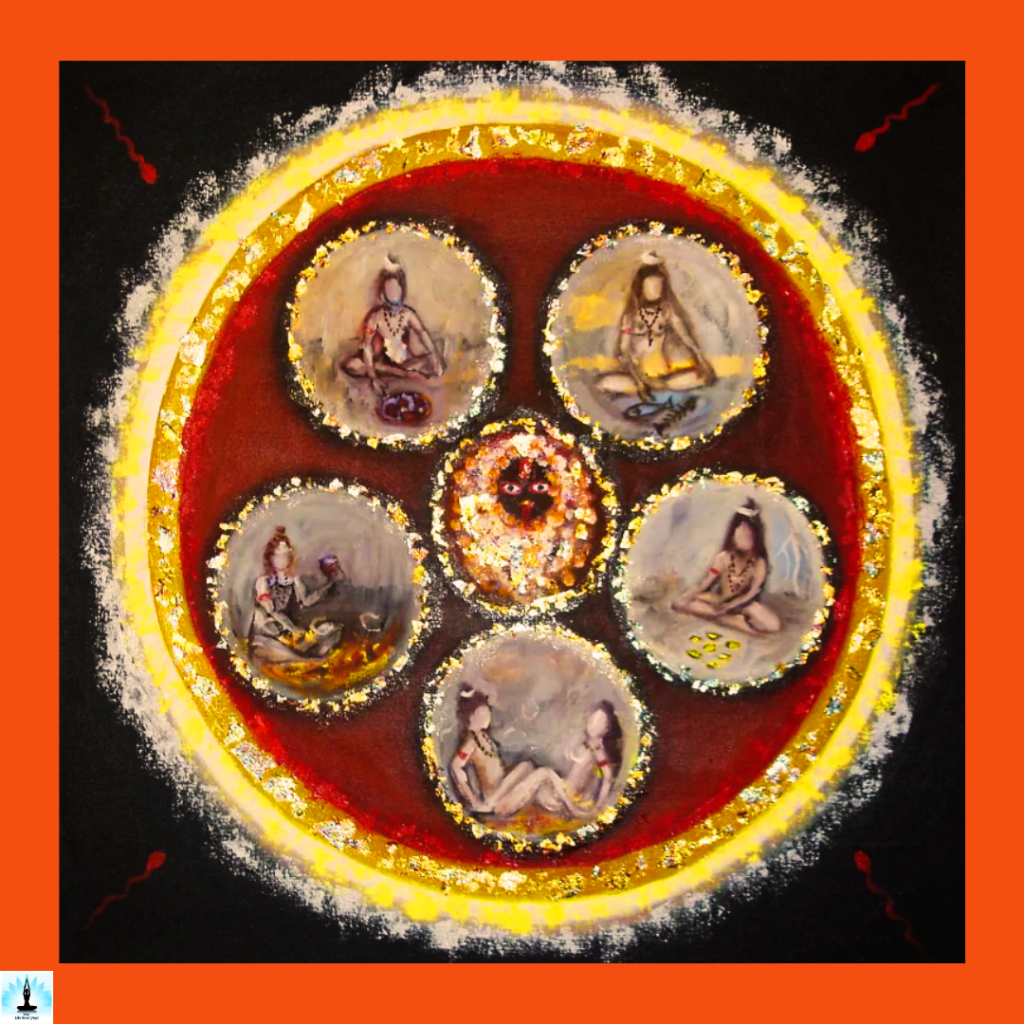Introduction – Exploring The Secrets of Panchamakara Sadhana – Awakening the Five Elements
The Secrets of Panchamakara Sadhana serve a dual purpose: initially, for individuals to engage in yoga sadhana (meditation) amidst basic pleasures, gradually decreasing consumption of wine, meat, fish, and regulating sexual activity; and subsequently, after diminishing the allure of these activities, embracing the subtle practices of Tantra meditation.
Within the Awakening, the Five Elements of Tantra Yoga, a practice known as Panchamakara Sadhana holds a profound significance. This esoteric and often misunderstood practice is shrouded in symbolism, but it carries within it a transformative power that has captivated spiritual seekers for ages. Let’s delve into the depths of Panchamakara Sadhana and uncover its hidden meanings.
Table of Contents
Panchamakara Sadhana Across Various Tantric Texts
The practice of Panchamakara Sadhana finds its place in a multitude of Tantric texts, each offering its unique perspective on this intricate ritual. As affirmed by the Mahanirvana Tantra (I.57), these five materials were ordained by Lord Shiva himself, intended exclusively for the courageous souls known as viras, and not for the ordinary populace.

In the Nirvana Tantra (XI.9), the five elements are hailed as imperative for attaining ultimate liberation. The Kamakhya Tantra (II.39) extols the virtues of Panchamakara Sadhana, shedding light on its significance and potential benefits.
The Kularnava Tantra (II.23) imparts wisdom to Kaula practitioners, advising them to seamlessly integrate both gratification and enlightenment, without condemning the former. According to the same text (II.122 – 124), the Kaula path, which incorporates Panchamakara into worship, is likened to traversing a razor’s edge or fearlessly holding a deadly cobra or placing one’s arm around the neck of a tiger in terms of its formidable nature.
In various Tantric texts, the Panchamakara Sadhana stands as a symbol of both challenges and profound spiritual potential, an embodiment of the multifaceted nature of Tantra’s teachings.
Understanding Panchamakara: The Five M’s
Panchamakara Sadhana, also referred to as the “Five Ms,” encompasses five components, each represented by a word starting with the Sanskrit letter “M”:
- Madya (Wine): Symbolizing the divine nectar of spiritual knowledge and the ecstatic state of union with the divine.
- Mamsa (Meat): Representing the act of transcending material desires and attachments.
- Matsya (Fish): Signifying the ability to navigate the currents of life while remaining untouched by worldly influences.
- Mudra (Grain): Denoting the inner nourishment obtained through spiritual practices, leading to self-realization.
- Maithuna (Sexual Union): Symbolizing the union of opposites, the merging of feminine and masculine energies, and the transcendence of duality.
Spiritual Significance of Panchamakara Sadhana

In the realm of Dakshinachara or the Right-handed path of Tantra, the Panchamakaras bear profound esoteric meanings.
- Madya alludes to the heavenly Amrit, which drips from brain glands onto the tip of the tongue during Khechari Mudra.
- Mamsa signifies the retraction of the tongue, resembling the Khechari Mudra where the tongue is drawn back, simulating the ingestion of meat.
- Matsya, represented by twin fish, signifies the activation of Ida and Pingala Nadis along the spinal column, mirroring two intertwining fish.
- Mudra encompasses diverse hand and body gestures during Kundalini activation and passage through the central channel.
- Maithuna symbolizes the unity of male and female energies, leading to transformation and creation.
Cultivation of the Panchamakara sadhana
There are two ways in the world. One is called nivritti and the other is pravritti. Nivritti Yoga, Pravritti Yoga, Agama tantra is on the path of Nivritti of Pancha M-kara Sadhana, and yoga school like Mahanirban Tantra is on the path of Panchamakara Sadhana, so much is this difference. After those whose desire for pleasure and indulgence has grown modesty, then the yoga path of Nivritti path is the way to liberation.
Those who want to hold the whole world by making hundred-armed kinship their way. Out of compassion for them, Sadashiva – Lord Shiva revealed the sadhana of the gross Panchamakara sadhana. The objective is to elevate to the path of yoga through enjoyment, leading to renunciation through the path of ultimate freedom.
Panchamakara Sadhana in the Context of Mahanirvana Tantra
In the Mahanirvana Tantra’s introduction, the concept of Panchamakara is meticulously expounded. It categorically outlines humanity’s division into three classes: Pashu, Vira, and Divya, each influenced by the Gunas, which manifest as their predominant traits.

These traits find expression in three cardinal physical functions: sustenance through eating and drinking, essential for maintaining the Annamayakosha (physical body); and reproduction through sexual intercourse, pivotal for its continuation.
These functions, collectively termed Panchatattva or Panchamakara (“five Ms”), are known as Madya (wine), Mangsa (meat), Matsya (fish), Mudra (parched grain), and Maithuna (sexual union). Mudra, conventionally associated with ritual gestures or Hatha Yoga poses, here symbolizes parched cereal.
The Tantras refer to these elements as Panchatattva, Kuladravya, and Kulatattva, with certain elements possessing esoteric designations like Karanavari or Tirtha-vari for wine.
The fifth element is commonly known as Lata-sadhana (Sadhana with a woman or Shakti). Moreover, interpretations of these five elements vary based on their association with Tamasika (Pashvachara), Rajasika (Virachara), or Divya or Sattvika sadhanas.
The Secrets of Panchamakara Sadhana
Panchamakara Sadhana translates to “Five Truths” or “Five Elements” in Sanskrit. Different Hindu, Tantric, and Buddhist traditions offer distinct interpretations of this term. Panchamakara Sadhana directly connected to the Mahābhūta or Five Elements. Panchamakara is often interchangeable with Panchatattva.
Worship involving Panchamakara Sadhana
It typically transpires in a circular arrangement, encompassing individuals of varied genders and roles. The objective of such worship is to evolve from practicing meditation amidst material indulgences to embracing the subtle practices of Tantra as a transformative expedition.
The Symbolism Behind the Panchamakara Sadhana
Panchamakara Sadhana’s true essence lies in its symbolic nature. While the literal interpretation might raise eyebrows, its deeper meaning is spiritual and transformative. It is not a call to engage in literal indulgence but rather an allegorical representation of the seeker’s journey toward enlightenment. Each element serves as a metaphor for transcending the material world and unifying with the divine.
The Inner Alchemy of Transformation
Panchamakara Sadhana is an advanced practice that demands a strong foundation in Tantra Yoga. Through its intricate rituals, visualization, and meditation techniques, practitioners are guided toward a profound inner alchemy. The practice aims to transmute base desires and attachments into spiritual energy, enabling the seeker to move beyond the limitations of the physical realm.
The Integration of Opposites
Central to Panchamakara Sadhana is the concept of integrating opposites. Just as the practice unites the five elements, it encourages the seeker to harmonize opposing forces within themselves. The union of male and female energies—symbolized by Maithuna—represents the internal balance required for spiritual evolution.
Controversy and Misunderstanding
Panchamakara Sadhana has often been the subject of controversy and misinterpretation, with its symbolic nature sometimes misconstrued as literal indulgence. However, the essence of the practice lies in its spiritual symbolism and the quest for transcendent knowledge.
FAQs on Panchamakara Sadhana
Q1: What is Panchamakara Sadhana?
A1: Panchamakara Sadhana, also known as the “Five Ms” practice, is a ritualistic and symbolic aspect of Tantra, involving the utilization of five elements: Madya (wine), Mangsa (meat), Matsya (fish), Mudra (parched grain), and Maithuna (sexual union). These elements are imbued with esoteric meanings and are used as allegorical tools to facilitate spiritual growth.
Q2: Is Panchamakara Sadhana a literal practice involving wine and meat consumption?
A2: No, Panchamakara Sadhana is not intended for literal consumption of wine and meat. Instead, these elements represent deeper spiritual concepts. Wine symbolizes divine nectar, meat signifies control over speech, fish represents the ida and pingala nadis, parched grain stands for spiritual company, and sexual union denotes the union of energies for spiritual transformation.
Q3: Who can practice Panchamakara Sadhana?
A3: Panchamakara Sadhana is typically recommended for advanced practitioners of Tantra who possess a strong foundation in the teachings and practices. It is not suitable for beginners due to its esoteric nature and potential for misinterpretation.
Q4: What is the purpose of Panchamakara Sadhana?
A4: The purpose of Panchamakara Sadhana is twofold: first, it serves as a method for practitioners to gradually detach from material desires and shift their focus towards spiritual growth. Second, it aims to help practitioners integrate both material and spiritual aspects of life, ultimately leading to self-realization and enlightenment.
Q5: How is Panchamakara Sadhana performed?
A5: Panchamakara Sadhana involves symbolic use of the five elements during meditation and ritualistic practices. Practitioners use their understanding of the deeper meanings of wine, meat, fish, parched grain, and sexual union to guide their meditation, visualization, and inner transformation.
Q6: Are there any risks or potential misunderstandings associated with Panchamakara Sadhana?
A6: Yes, Panchamakara Sadhana can be misunderstood if taken literally. It’s crucial to approach this practice under the guidance of a TANTRIC OR TANTRA GURU who can explain its symbolic significance and guide practitioners on its proper interpretation. Misunderstanding could lead to inappropriate practices or beliefs.
Q7: How does Panchamakara Sadhana relate to Tantra philosophy?
A7: Panchamakara Sadhana aligns with Tantra’s core principles of using everyday experiences and rituals to attain spiritual growth. It emphasizes the transformation of mundane actions into vehicles for profound spiritual insight, helping practitioners integrate various aspects of life on their journey to self-realization.
Q8: Is Panchamakara Sadhana the only path in Tantra?
A8: No, Panchamakara Sadhana is just one aspect of Tantra. Tantra encompasses a diverse range of practices and philosophies, some of which may not involve Panchamakara elements at all. Tantra provides various paths suited to individual inclinations, including those centered on meditation, worship, mantra, and more.
Q9: What precautions should one take before attempting Panchamakara Sadhana?
A9: Before attempting Panchamakara Sadhana, it’s essential to have a solid foundation in Tantra philosophy and practices. Seek guidance from a proper tantra guru who can provide a clear understanding of the symbolic meanings and guide your practice in a safe and appropriate manner.
Q10: Can Panchamakara Sadhana be practiced without involving all five elements?
A10: While the practice traditionally involves all five elements, some practitioners might choose to focus on specific elements based on their level of understanding and comfort. However, altering the practice should only be done under proper guidance to ensure alignment with the intended spiritual goals.
Conclusion – Embracing the Journey of Self-Realization
In conclusion, Panchamakara Sadhana in Tantra Yoga is a practice that invites seekers to embark on a journey of profound self-realization. It encourages them to transcend the confines of the material world, integrate opposing forces, and ultimately experience union with the divine. As with any esoteric practice, a qualified teacher and a deep understanding of its symbolism are essential for those who seek to explore its mysteries.
